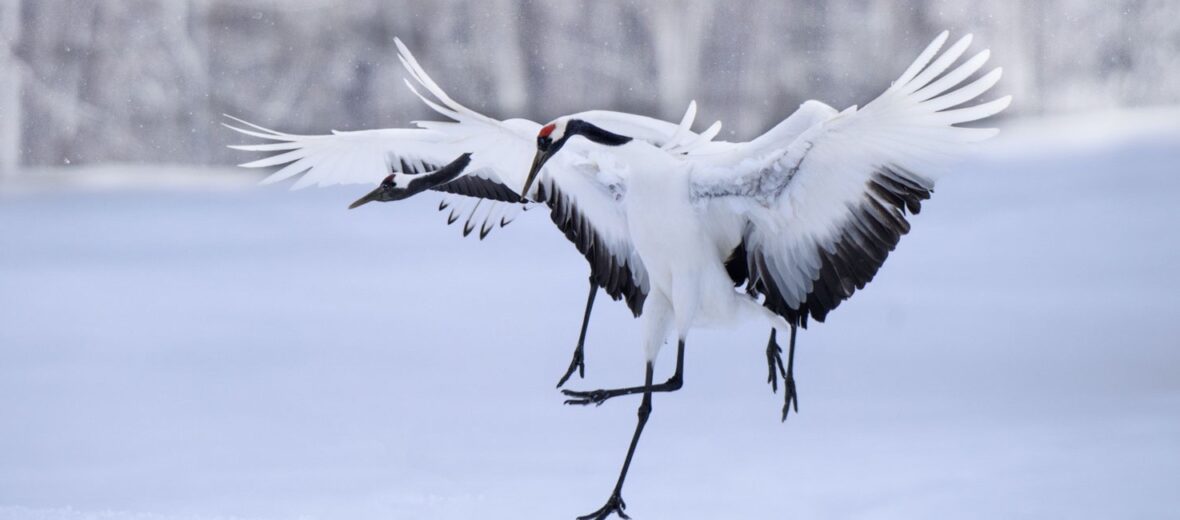
The Japanese crane, aka red-crowned crane or Manchurian crane, is the second rarest crane in the world. The whooping crane is number 1. These cranes are known as a symbol of longevity, luck, and fidelity. They can be found in the eastern parts of Russia around the Amur River basin, in China, Japan, and other areas of southeast Asia. Unfortunate as it is, there are only an estimated 1,830 specimens left in the wild. The IUCN lists them as Endangered, with their population decreasing. This is due, in part, to habitat destruction and pollution. This article is on special request from Daniel.
First the Stats…
Scientific name: Grus japonensis
Weight: Up to 19 lbs.
Length: Up to 5.2 feet
Wingspan: Up to 8.2 feet
Lifespan: Up to 40 years
Now on to the Facts!
1.) There are 2 primary populations of Japanese cranes: non-migrating, and migrating.
2.) They prefer coastal saltmarsh, rivers, rice paddies, cultivated fields, and freshwater marshes.
3.) Red-crowned cranes are communal and live in flocks.
4.) Japanese cranes have a special oil-producing gland at the top of their tail that is used during preening to spread an oily substance over their feathers that keeps their feathers from becoming saturated with water.
5.) These beautiful birds are diurnal (active during the day).
But wait, there’s more on the Japanese crane!
6.) Japanese cranes are monogamous (mate for life).
7.) Females lay 2 eggs, but only 1 survives.
Did you know…?
Even though they are also called the red-crowned crane, they actually don’t belong to the crowned crane family but rather to the typical crane family.
8.) Communication is performed by calling, courtship dancing, and inflating their red cap, located on top of their head.
9.) Both parents participate in egg incubation.
10.) Chicks are precocial (born in a mature state and relatively self-reliant), and leave the nest just a few days after they hatch.
But wait, there’s still more on the Japanese crane!
11.) A group of Japanese cranes is called a seige, sedge, flock, or a herd.
12.) They eat fish, amphibians, insects, aquatic invertebrates, rodents, heath berries, reeds, grasses, corn, various other plants, grain, and waste from agricultural crops.
Did you know…?
Even though they live in flocks, they still keep a 2 – 3 feet distance from each other. Those that break that “bubble” are aggressively attacked. Social distancing at its finest.
13.) Famous for their beautiful mating dances, the Japanese crane’s performance includes: gracefully leaping in the air, bouncing with jerky movements, and running crazily with outstretched wings. They will also bow with their legs bent and wings raised, and jump, pick up various vegetation or sticks, and throw them in the air.
14.) The red skin on top of their head becomes redder and brighter when angry or agitated.
15.) The only predators they are faced with, which are typically chased away, are gray wolves, red foxes, raccoon dogs, badgers, Eurasian lynxes, and domestic dogs.
Now a Short Japanese Crane Video!
Also, check out the Critter Science YouTube channel. Videos added frequently!
Want to suggest a critter for me to write about? Let me know here.



